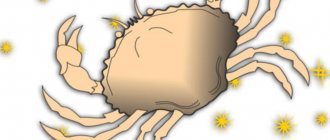Native lands and pedigree of the striped raccoon
Despite all the cuteness of this little animal, the striped raccoon is a representative of the order of predatory animals.
In addition, zoologists classify it as a member of the mammalian class, the raccoon family, and the raccoon genus. Everyone is already accustomed to the idea that small raccoons are domestic animals, but this is not at all the case; such delightful predators mainly come to us from North, Central and South America. According to some historical information, this representative of the fauna was brought to Europe only in the 30s of the twentieth century. Due to the unpretentiousness of this animal, it feels great in Germany, France and even in some regions of Russia.
Peculiarities of behavior of the raccoon
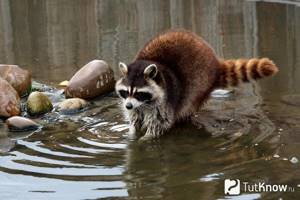
The raccoon acquired its so-called “surname” - rinse - in connection with its habit of rinsing food before eating. He walks on the ground on both two and four legs, while stepping on the soles. They are also athletes! Despite the fact that they are very well-fed, they can climb trees with enviable dexterity; moreover, it is at heights that they spend most of their free time.
By nature, stripers are animals that do not overeat with food; their diet is dominated by products of plant origin, such as berries, corn, nuts, but if he sees an insect, worm or snail, they will not bypass him either. And when the sly one discovers an inhabited bird's nest, he will gladly steal a few eggs or even small chicks.
If a raccoon goes spearfishing, then this is a very interesting process. The thing is that the raccoon does not dive in search of any tasty treat, but catches it with its paws. Underwater, he does not have the opportunity to see or smell his prey, so he simply carefully moves with his “little hands,” while exploring not only the water, but also the entire underwater kingdom, including various stones and snags. As soon as he catches something, he quickly grabs his catch, rinses it, and then starts eating. Underwater, his fingers can easily determine whether a product is edible or ready for consumption.
A prerequisite for this mammal to live comfortably in the wild is not so much the presence of its own home, as a latrine. As the latter, they often use small hollows or crevices of trees. Raccoons can live in more or less spacious hollows, crevices of old trees or stones. They can also settle in a hole that someone has already dug, since they do not know how to build their own. They often choose to live in areas near villages, because the raccoon is not very timid and, without much embarrassment, can climb into someone’s garden or garden to get various delicacies.
Their period of activity begins at dusk and continues until early morning; during the daylight hours, they prefer to sleep in their house. Although, depending on living conditions, these cunning people can change their routine. For example, if a raccoon lives on some coast, then its sleep depends on the ebb and flow of the tides, because as the water recedes, a lot of goodies may remain on the shore, which it really loves. With the onset of winter, their activity decreases slightly, but the animals are not used to hibernating.
Habits and character of raccoons
A raccoon is a wild animal, therefore, its character is not at all domestic, and is also very different from a cat or dog. Raccoons in most cases are distinguished by a certain playfulness, activity, as well as excellent mental abilities.
These qualities of these animals very often cause damage to furniture and household items. If you are still determined to have a raccoon in your home, then you should be prepared for the animal to fully display all these basic characteristics in your home. It is also worth noting that physical punishment is not the best method of training raccoons. This is due to the fact that the animal can become even more aggressive and begin to do dirty tricks to spite its owner. Therefore, it is worth paying more attention to the animal, communicating with it, and also encouraging its good behavior.
Raccoons for the most part are nocturnal animals that prefer to get enough sleep during the day, and at night require communication and games. Therefore, this rule of these animals is worth accepting and living with, since the reason for this behavior was survival in the wild.
Raccoons are distinguished by a rather hot-tempered character, which flares up precisely at the moment when the animal perceives a potential threat. Therefore, in order for the animal to adapt quite well and easily in your living space, it is important to not initially create circumstances that could frighten or anger it. This is due to the fact that raccoons are fighters and can immediately get into a fight.
Another quality of this animal is that a raccoon, sensing danger, can immediately pretend to be a dead animal. So, if you see this phenomenon, do not be afraid and run to the veterinarian, as soon as everything calms down, the raccoon will definitely come to its senses and everything will be as before.
The rancor of raccoons is also at a very high level, therefore, you should not expose your animal to insults, since for a very long time he will not be able to forgive you for this.
As for the nutrition of raccoons, unpretentiousness is the most key quality of these animals. They eat everything they can, including vegetables, fruits, and other available products in your refrigerator.
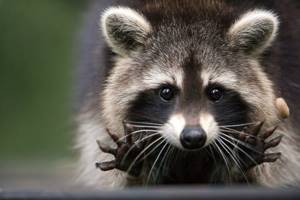
Continuation of the raccoon family
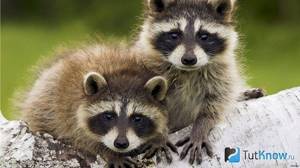
Males reach sexual maturity approximately in the second year of life, while females mature at the age of one. The mating season for these animals begins in January and lasts until mid-March. Pregnancy lasts approximately 1.5 months; after this period, 3–4 babies are born, who live in the parent’s nest for about six months. After this, they move on to adulthood and independent life. Female raccoons become pregnant only once a year.
Characteristics of the appearance of a pretty predator
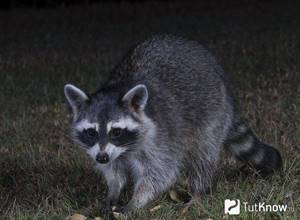
The striped raccoon is a cute creature that resembles a cross between a dog and a fox in appearance, of medium size, its body length is approximately 50–65 cm, while the tail grows to 23–28 cm. The maximum body weight is approximately 14 –16 kg, their average weight is about 6–9 kg. The male half of raccoons is usually larger than the female half. Nature rewarded this creature not only with a memorable appearance, but also with a slender, rather strong and stocky body.
- head
is quite wide with a cute, slightly pointed face. In its upper part there are small upward-standing ears, which have a slightly rounded shape. - muzzle
is that it is a bit reminiscent of the so-called mask - a black nose, around it there is a white area, and the area of the eye sockets and forehead is also painted black. Around his cute little eyes there are wide lines, black in color, which are located at an acute angle and continue to the neck, the marginal edges of these stripes are decorated with a narrow white border.
Their limbs Their paws are often compared to human ones, since there are no partitions between the toes; thanks to this feature, raccoons have very well developed fine motor skills of their paws, they manipulate small parts very well. Each finger ends in a long, sharp claw; it is they that help the animals conquer the tops of trees.- The feet
of these furry predators are also not without their peculiarities - they are very mobile and capable of turning all 180 degrees. With the help of such uniqueness, the animals can perform various tricks in the trees, even to the point that they can travel upside down. - The coat
of this washing enthusiast is quite thick, but in different parts of the body it differs in length; on both sides of the head it is much longer than it forms the “sideburns”. The color is usually represented by gray-brown tones. - The tail
is fluffy, decorated with black or dark brown rings, of which there are from 6 to 10 pieces.
Raccoon Health
It is worth initially noting that raccoons are completely recent animals that are quite widespread among breeders today. However, if you decide to get this animal, then you should definitely show it to a veterinarian after purchasing it in order to get the necessary vaccinations, which include mandatory vaccination against rabies.
To ensure that the animal does not suffer from pests such as various parasites in the form of fleas and ticks, it is necessary to take the necessary preventive measures.
If you notice any difficulties with digestion in a raccoon, you should definitely check that the animal does not consume any prohibited foods in its diet in the form of sweets and other unnecessary treats.
It is also worth noting that raccoons do not tolerate exposure to direct sun very well, therefore, in order for the animal not to encounter such a nuisance as sunstroke, it is necessary to take this into account.
Raccoons are quite restless animals that can easily swallow something inedible, therefore, you should definitely watch what he eats.
If you observe any atypical changes in the animal’s behavior, you should definitely show it to a highly qualified specialist who can determine the cause of the raccoon’s poor health and suggest ways to eliminate the problem.
Based on all of the above, we can conclude that the health of raccoons is quite strong, although some nuances in its maintenance should definitely be taken into account.
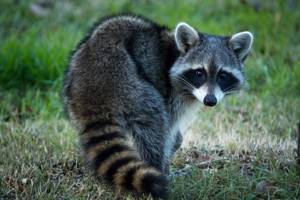
Keeping a raccoon at home
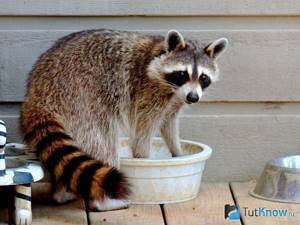
For the safety of the animal itself and your apartment as a whole, it is necessary to arrange for this pet its personal home, for which a fairly spacious cage is ideal and preferably high. Keeping such a nimble and agile animal in cramped conditions is not only an irreparable mistake, but also simply a mockery of a pretty predator. After all, infringement of his personal space can lead not only to your pet’s bad mood, which can serve as an impetus for sudden outbursts of aggression towards you and the rest of your family, but also to a significant deterioration in the animal’s health.
It is good to make the animal’s personal house into several floors, dividing them among themselves with various shelves. On each tier you should place a variety of interesting things, such as toys, hammocks, swings or rings. It is also necessary to arrange a soft sleeping place for your friend.
It is best to place the cage in a bright, spacious room; under no circumstances place the raccoon on the balcony; in the summer the animal will simply die from the heat.
Very important attributes in your original pupil's house are a food container, a drinking bowl and a medium-sized basin filled with water. He will wash his food in it, as well as rinse all available items; it is good to give him several rubber toys that will be thoroughly washed and washed every day.
The fact that your pet has his own personal living space does not mean that he will spend all his time there. He needs a house in order to live there at night and at a time when no one is home. It is not advisable to leave this merry fellow alone in the apartment, because stripers are very smart and also very curious little animals.
They can easily open a window or balcony and will certainly fall out, even if your friend does not kill himself, he will certainly run away in search of new adventures. If all your windows and doors are tightly closed so that no one can open them, the raccoon will find something exciting to do inside the apartment, which you are unlikely to like. It will not be difficult for them to open the taps in the bathroom, and while your tenant will be splashing around in the water with great pleasure and washing everything that comes to hand, and this could all be equipment, books, and documents, your neighbors will already be planning a new repairs that you will pay for. The fact that he can ruin furniture, tear off wallpaper, break dishes and other smaller pranks is probably not worth talking about.
Since these animals are omnivores, they almost never have problems with nutrition. When compiling a menu for a domestic striped raccoon, it is necessary to bring it as close as possible to its usual diet. A raccoon must consume both plant foods and animal foods.
Meat is the main source of protein and this comrade cannot do without it; preference should be given to low-fat varieties such as chicken, rabbit, turkey and lean veal. This lover of food will not refuse either raw or boiled meat, but it is still better to feed him with thermally processed foods. This will prevent the raccoon from becoming infected with helminths or intestinal infections.
An integral part of the daily diet should be fruits - these can be bananas, grapes, peach, pear, apple, kiwi, plum and many others, with the only exception being citrus fruits, although these animals love them very much, they often cause allergic reactions.
Your friend will not refuse vegetables either; some of them should be on his menu every day - carrots, peas, zucchini, asparagus. Sometimes you can pamper him with a piece of watermelon or melon, but often this is not necessary, because this cunning beast can begin to turn up its nose at not so sweet foods.
It is also welcome to include gargle and berries in the list of products - raspberries, currants, especially black currants, cherries and strawberries.
From time to time, feed this pet with seafood; you can also treat it to river fish, but it does not contain so many useful substances.
If there is a cat or dog living in your house, then be careful, this predator with a pretty face will often steal their food.
After some time of living together with a raccoon under the same roof, you will notice what he likes most and what dish he does not like at all.
Racoon breeding
Many owners are interested not only in keeping, but also in breeding raccoons, because these animals are gaining increasing popularity as pets. Both demand and price are growing for them.
To breed, it is not at all necessary to have a couple of animals at once. The female can bring offspring from an invited gentleman. But we must remember that raccoon girls are monogamous and after mating with one male they no longer tolerate others near them.
Pregnancy lasts 63-64 days, after which 3 to 8 puppies are born, which the mother guards very jealously. Therefore, it is better to equip her with some secluded place in advance. Little raccoons are ready to be transferred to new owners at the age of 1.5-2 months.
No matter how cute and funny the animals may look, you must try not to succumb to their charm and soberly consider how much you want to have one, because a domesticated raccoon released into the wild is doomed to certain death.
What do you think about domesticating wild animals? Share your opinion on
A raccoon, although domestic, is still a forest animal, so don’t expect it to be as obedient as a dog or as quiet as a cat. Rather, the raccoon will be a child in your house who will never grow up. Choosing the right diet for a raccoon is very important for its health.
There are two ways to feed a raccoon: natural food or dry food. In this article I will tell you all the nuances of both types of feeding.
A raccoon's nutrition is a fundamental factor in the health and appearance of your pet.
Let's start with the fact that while the raccoon is small, it drinks its mother's milk; if you took your little minke whale too early from its mother (1-2 months), then you simply need to supplement it manually through pipettes and bottles with a bitch's milk substitute. Today, the market for products for our little pets offers a huge variety of mixtures. Both dog and cat mixtures are suitable for raccoons. On various forums you will find a large number of disputes on this topic, but, in fact, the choice is up to you! When feeding a baby with formula, it is important to maintain the correct proportions when diluting, because the amount of liquid does not mean that all of it is nutritious. If you add little mixture, it will be, roughly speaking, “colored water”, in which case you can starve the baby. Personally, I recommend Meradog. Proper nutrition of a raccoon is very important during the feeding stage.
Important:
Under no circumstances should you feed a small raccoon with cow's milk; it contains much less nutrients, and you will also starve the baby. During the first months of its life, the raccoon stays awake only to eat. Over time, the breaks between meals decrease and the amount of sleep decreases. While the raccoon is very small (1-1.5 months), it is fed every 3-5 hours (according to the principle: if it wakes up, it means it’s hungry). The raccoon is fed until it refuses to eat, and even after that it is offered several more times to make sure that the baby has actually eaten! Massaging your tummy after eating is very important! It is necessary to imitate the tongue of a myma by taking cotton wool and moistening it with warm water, this is done in order to ensure the passage of products throughout the gastrointestinal tract. If you neglect to massage the tummy, a blockage may occur, which will lead to death. To put it simply: the baby will not be able to defecate, intoxication will occur and the raccoon will die.
Feeding example:
1 month – 40 ml every 2-3 hours (raccoons may not wake up at night and not ask for food, but be prepared to feed them at night) 1.5 months – 60 ml every 5 hours 2 months – 80 ml every 5 hours 2.5 months – 40 ml every 5 hours + cottage cheese with grated banana and egg 3 months - completely independent nutrition from a bowl.
When your baby has grown a little (you will notice this by the number of active phases) he needs to be switched to adult food. To begin with, you can try giving your baby bread soaked in the same mixture to which he is accustomed. The raccoon will lick and learn to suck the mixture. As the baby grows, you can introduce eggs (both raw and hard-boiled), cottage cheese, pieces of boiled chicken or meat, and fresh fruits: bananas, grapes, apples into the diet. Only one product can be introduced per day! Give and watch the reaction (taste and stool), this way you identify your raccoon’s personal preferences in nutrition and watch how his body digests certain foods. Over time, you will completely formulate the diet for your pet.
Basic rules for raccoon nutrition:
1. You need to feed the raccoon 2-3 times a day. 2. It is necessary to take into account individual characteristics and the time of year. For example, as winter approaches, a raccoon begins to eat more animal food in order to accumulate fat. In the spring, the raccoon begins to actively lose weight and can only eat a few nuts a day. By summer, a raccoon can lose up to 6 kg, do not be alarmed, this is a natural process, in the fall the raccoon will begin to gain weight again. 3. Don't overfeed your raccoon. Any animal that is overweight will live shorter lives due to the additional stress on the heart and other organs. 4. Eliminate junk food from the raccoon’s diet: any sweets, flour, spicy, salty foods. 5. Do not try to create a planned diet for a raccoon, because a raccoon, like a person, is subject to external factors, such as mood, well-being, etc., therefore, one day he may want to eat carrots, and the next refuse it. The raccoon itself will tell you what to feed it, the main thing is to watch your pet. 6. Remember that each raccoon is individual and has its own taste preferences. What is tasteless for one is a delicacy for another.
Choose your raccoon's food according to your pet's taste preferences.
When keeping a raccoon in a natural environment, you should understand that a raccoon, like a person, is an omnivore. But don't forget that some foods are good for us, but many are not, and so are raccoons. Of course, they can eat everything, but this does not mean that they can do everything. For example, there is a common belief that raccoons eat cookies. Any flour products are contraindicated for a raccoon, and cookies (only oatmeal) are rarely given as a reward, as are nuts (only a few per week).
Now a little about “dry” raccoon nutrition.
Raccoons are usually fed dry dog or cat food; of course, the choice of food is yours. What is the catch with this feeding? It would seem that everything is simple: he wrote three times a day and the raccoon is happy. Veterinarians say this: if an animal is on dry food, then it should not be given anything from the table! This means that you won’t be able to treat the raccoon with anything, but how can you resist these pugs? The fact is that the less food a raccoon eats, the easier it is for the digestive system, the enzymes produced know how much and what to process, and if you deviate from the diet, problems with the gastrointestinal tract may begin.
In any case, what to feed the raccoon is up to you to decide. The main thing that . Love your pets and feed them properly.
Raccoon food:
List of foods that can be given to a raccoon: 1. Meat, fish (both raw and boiled, but heat-treated foods are better):
Chicken Beef Turkey Veal Rabbit
Hake Pollock Cod Sea Bass Flounder Whiting Tuna Shrimp Crabs
Fruits, vegetables, berries:
Grapes Apples Bananas Peaches Pear Kiwi Figs Plum Melon Watermelon
Carrots Fresh peas Boiled corn Asparagus Zucchini Pumpkin
Raspberry Strawberry Cherry Cherry Currant Gooseberry Strawberry Blueberry
Porridge, sour-milk products
Oatmeal Buckwheat Muesli Rice
Cottage cheese Yogurt Cheese Kefir Ryazhenka Sour cream Milk
Nice things:
Nuts Oatmeal cookies Drying Honey Dried fruits Eggs
Exclude:
Flour Sweet Salty Spicy Peppered Smoked Citrus Red fish Chocolate!
You can talk about raccoon nutrition and get advice on keeping a raccoon in our
The raccoon belongs to the genus of predatory mammals. According to different classifications, there are three or four species, but the most common is the striped raccoon. It is his cute face that people imagine when it comes to how to care for a raccoon at home, because more and more often the raccoon is kept as a pet.
Possible difficulties of keeping a raccoon

In the process of fun and games, he may bite or scratch you. This can be done not because of the aggressiveness of the animal and without any evil intentions at all, simply by simply playing too much, he does not know how to calculate his strength, so you should be prepared for this and excessive caution will not hurt. These animals do not always get along with other pets. And if a cat or dog lives in your house, then the raccoon can get used to them over time, and perhaps even make friends, but if we are talking about a hamster or a parrot, then your gargle views this living creature not as a neighbor, but rather as a delicacy . No matter how carefully you look after him, he will definitely find the time and opportunity to achieve the task, that’s how he is and you have to come to terms with it.
Usually this mammal relieves itself in the same place. But still, there are some specimens that do not become accustomed to the tray; in addition, during the mating season, the raccoon tends to mark its territory, so in early spring, cleaning will have to be done very often so that unpleasant odors do not take root in your house.
Another not entirely pleasant point is that the raccoon is a nocturnal resident, and if your kitten can wake you up in the middle of the night when it wants to eat, then the raccoon will wake you up for any reason, especially if it has a communication deficit. If you have a sufficient amount of free time, then its regime can be changed; for this, for some time the nocturnal animal needs to be exhausted in every possible way and fed only during the day, then perhaps you will achieve the desired result.
What to feed?
The diet of the striped raccoon should be varied, because in nature this animal is an omnivore. But there are no special problems. The animal can be given eggs, fish, meat, fruits and vegetables, nuts, cottage cheese .
It’s good if the menu is close to natural, but sometimes you can pamper your pet with “human” food - for example, cookies. Experimentation is encouraged to find out what the raccoon likes. High-quality food for cats and dogs will also suit him, which, as a rule, contains a balanced complex of nutrients and microelements.
Price when buying a raccoon
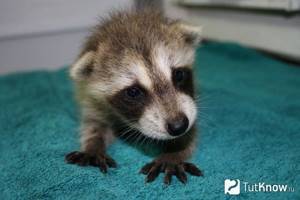
Do not hesitate to require sellers to present all documents for your pet. The average price for one individual striped raccoon varies from 10,000 to 60,000 rubles. More details about keeping a raccoon in this video:
Is it possible to stop an animal from biting?
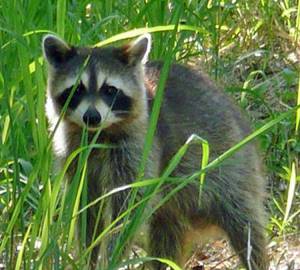
This little predator loves to bite. However, in fact, he does this for a reason, for him it is such a unique way of communication. Therefore, it is simply impossible to completely wean him from biting. In order for the animal to hear you, you need to talk to it in a low voice, since the animal understands this tone faster. However, this does not always help, so you need to try to teach him. To do this, you can use an empty plastic bottle, since it slams quite loudly, and you won’t hit it hard, but usually just hitting it near the predator is enough. However, it is necessary to pronounce the words so that in the future only them will be enough. It is also necessary to show him that you are in charge, because if he does not understand this, he will try to become the leader himself (especially if it is a girl). A small striped raccoon behaves quite poorly at home at first, so you can lift it by the scruff of the neck, just as its mother does in the wild. So he feels helpless and understands that you are in charge.






